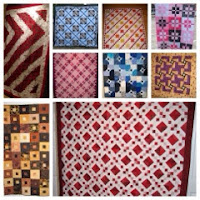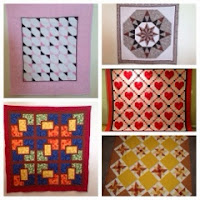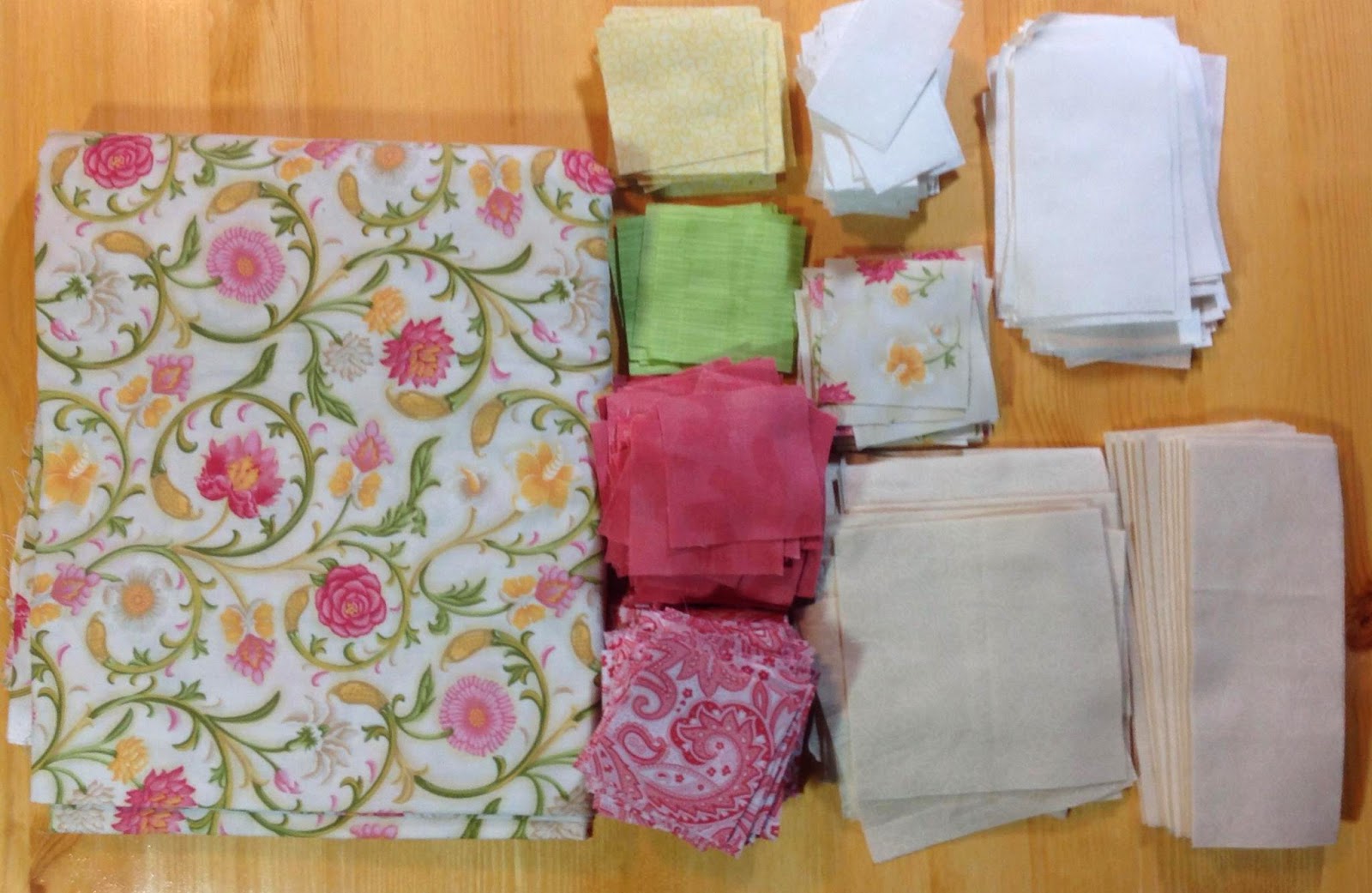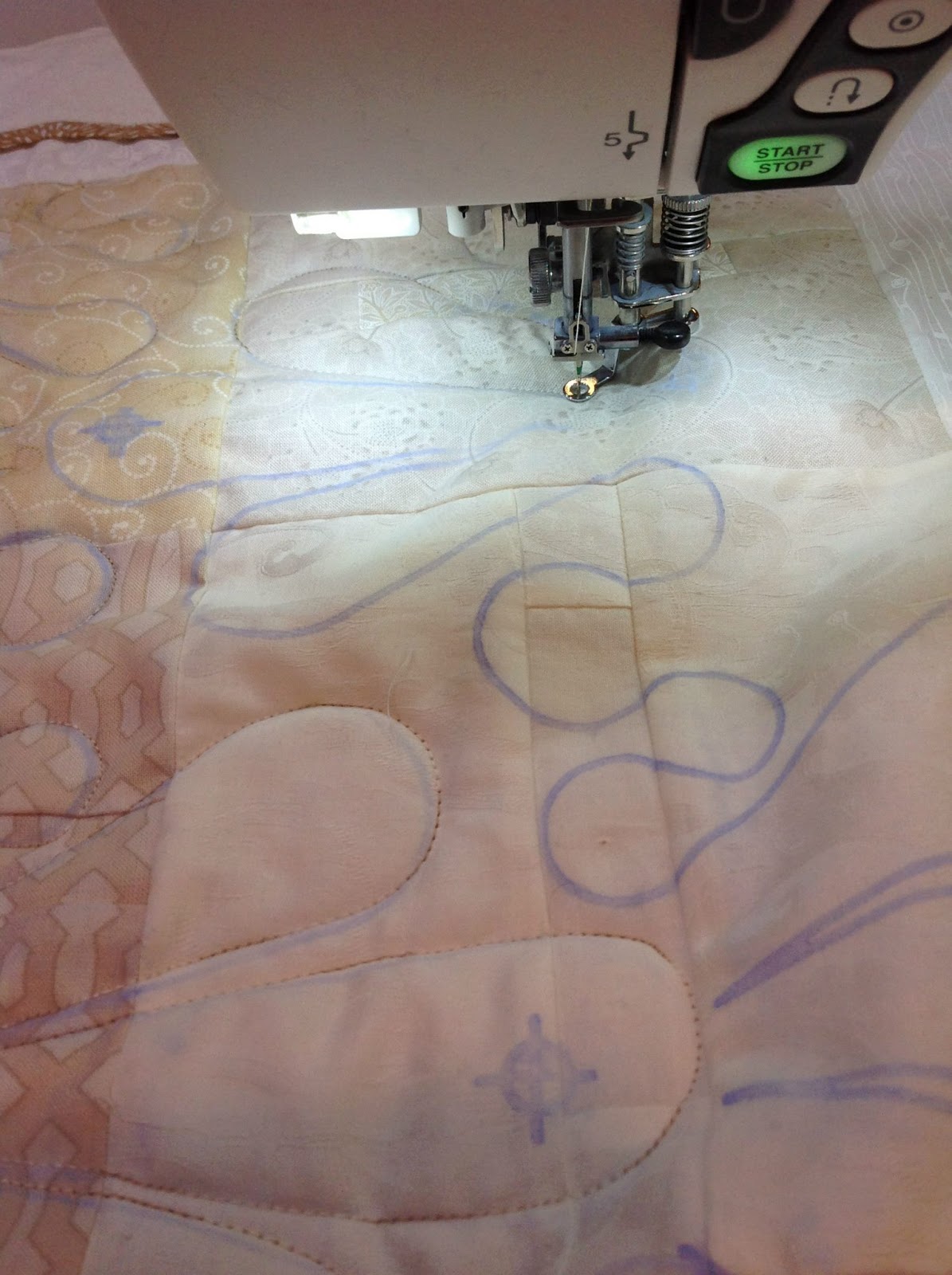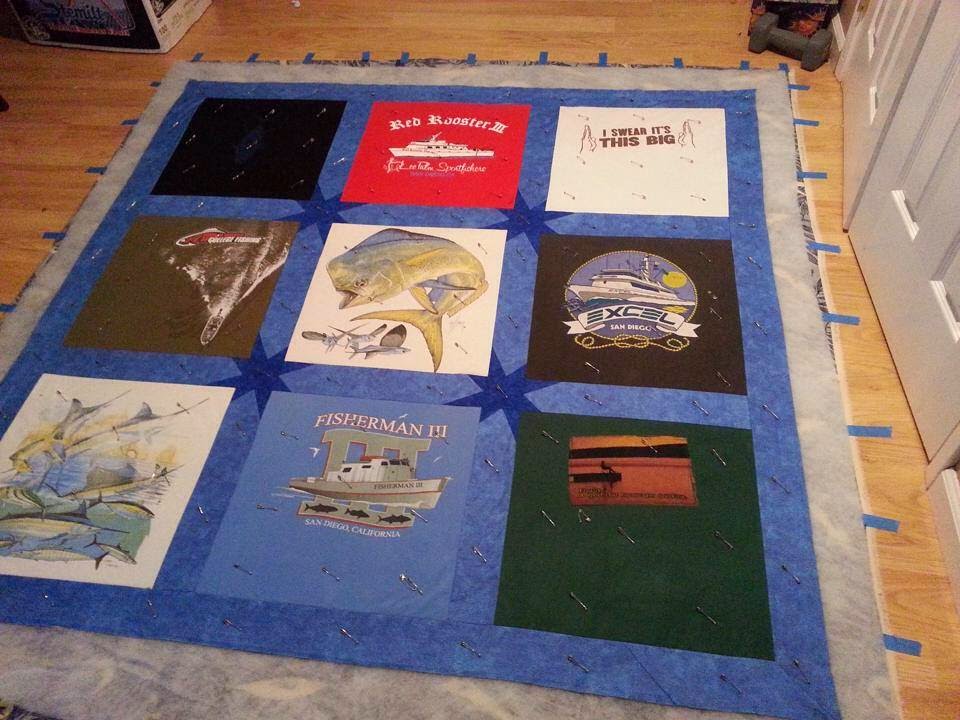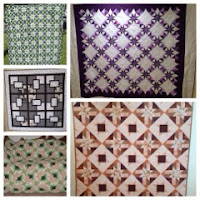You know that old saying, "A bad workman blames his tools?" With quilting, as with anything requiring some skill, the tools can only do so much. It takes practise to cut cleanly, piece accurately, and finish a project with a good result. However, there are tools that I use every time I work on a quilt and I thought I would share my experience of those.
I'm often asked what machine I use, which ruler I prefer, or just the basic "how do you...?" in terms of learning to quilt. So here goes.
1. You - As the main tool (no joke intended,) a love of fabric, color, and an inclination to sit for hours and sew is the first step. My husband often marvels at my patience and ability to basically cut a perfectly decent piece of fabric into smaller pieces and then sew them all back together again! It's my zen though. I have a stresssful job outside the home and sewing helps relax my mind. Creating a quilt is incredibly rewarding and feeds my creative needs.
2. What machine? I started with a basic Singer knock-off manual machine. It had few stitches and was a heavy metal piece of equipment which rarely failed. I probably didn't service it enough over the years but the older sewing machines tended to be somewhat hardier than the newer computerized versions and I was well pleased with it. My next machine was a Bernina virtuosa 150 QE, shown below left, and I was incredibly grateful to my then in-laws who indulged me with that machine as a gift. It was computerized, sewed very smoothly, and came with many useful features including a fabulous, previously unknown to me "1/4 in. foot." The 1/4 inch seam, if you're new to quilting, is the gold standard for correct seam placement when constructing a block.


About 18 months ago, after much research, I bought the Janome Horizon 7700. It has many features I didn't have in the Bernina - better lighting, thread cutter, and an automatic needle threader. The best feature is that it has a slightly "deeper throat" - the space to the right of the needle. This allows me to do FMQ (free motion quilting) on larger quilts and have a bit more space to move around. Here is a picture of the model. I will admit that the garnet red panel was also a huge draw for my design eye. I do love those jewel tones.
A few months before I purchased the 7700 I had treated myself to a smaller lightweight Janome, the 3160QDC, which I use for classes. It's also computerized and has many features similar to the Horizon but, as you can probably see, is much smaller and perfect for transporting or sewing at a friend's house.
I've actually used it for FMQ and had very good results. I am not, in any way, affiliated with Janome. But I do like their machines. My close friends use Pfaff and Viking with equal enjoyment so it really just boils down to personal preference and budget considerations.
Very recently, I became the "cat lady" of machines and purchased a second back-up (my horizon was being serviced and the little one was having a minor meltdown) so that my daughter has something to use for an upcoming senior project and I could piece without interruption. It's a brother SC9500 and I am very pleased with the results it has been producing. It was my least expensive machine by far, so it just goes to show that you don't always have to go for the top of the line.

3. Which tools? The tools that I use for any project are a sharp rotary cutter and a good ruler. I prefer
Olfa (mine is pink vs yellow) and the
creative grid rulers which have built-in non slip grips on the back side. I have a few self healing cutting mats and they come in a variety of sizes. I don't use a cutting glove but I am careful as the rotary cutters can slip occasionally and I have sliced my finger a few times over the years. A decent iron and board are important. I've used expensive Rowenta's and inexpensive off brands. Again, personal preference.

I keep a sharp pencil on hand, canned air to keep the lint from building up in my machine, and stop for a more thorough cleaning of my machine on a frequent basis. I also strongly recommend a professional cleaning twice a year and using the small brush and oil that come with all machines to keep it operating smoothly. I like size 11 needles for most sewing. I don't buy brands specific to my machine and I change them regularly. I generally use
Gutterman thread for piecing and a variety of cottons for the machine quilting - often
King Tut on the top and
bottom line on the underside.
That covers the basics. If you're new to quilting then search the internet, library or local fabric store for inspiration. Buy books or magazines that have pictures of quilts that appeal to you and try them with other fabrics. If you like a pattern but get distracted by the colors make a black and white copy of it so you can more clearly see how you could choose your own fabrics. Happy quilting!





